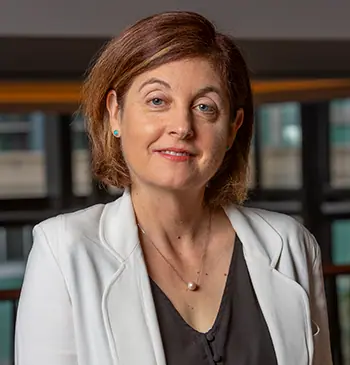
Growth Opportunities: What Bank Leaders Think
 Banking leaders are more optimistic than they were last year about the future of the U.S. economy and their own growth prospects, according to a survey of bank chief executive officers and directors at Bank Director’s 2012 Acquire or Be Acquired conference in Phoenix in January. The audience survey, which was sponsored by Grant Thornton LLP, included responses from more than 300 people.
Banking leaders are more optimistic than they were last year about the future of the U.S. economy and their own growth prospects, according to a survey of bank chief executive officers and directors at Bank Director’s 2012 Acquire or Be Acquired conference in Phoenix in January. The audience survey, which was sponsored by Grant Thornton LLP, included responses from more than 300 people.
More than half expect loan demand to increase during the next year, or 53 percent. Only 9 percent expect loan demand to decrease. In fact, organic loan origination was the top way banks plan to grow during the next year, with 56 percent of respondents saying that is their best bet.
Meanwhile, nearly half of those answering the survey expect problem loans to decrease, 49 percent. Another 39 percent expect no change in loan delinquencies during the next year. Sixty (60) percent say their bank is actually growing mortgage lending activities and 14 percent say they aren’t growing yet, but plan to do so.
Regulation is a big worry
Another 26 percent say they had no plans to grow mortgage lending, with concerns about the regulatory environment being the top obstacle. Of those who said they have no plans to grow lending, 43 percent say the regulatory environment is a factor.
The Consumer Financial Protection Bureau is expected to roll out new rules regarding mortgage lending in the months ahead.
In fact, worries about compliance with regulation are a top risk for banking leaders. A full 40 percent of those surveyed think compliance risk “due to uncertain regulatory developments” is their bank’s top risk; versus 42 percent who think credit risk is the top concern.
Few expect U.S. economy to worsen
As for the U.S. economy, the audience was likewise about evenly split between those who thought the economy will improve or stay the same. Forty-five (45) percent think the economy will improve and 46 percent think it will stay the same. That is an improvement from an emailed survey of 379 bank executives conducted by Grant Thornton LLP and Bank Director in the spring of last year, when 39 percent thought the economy would improve.
 “This number increased from our survey last year because we have seen private sector job growth over the last twelve months,’’ says Nichole Jordan, national banking and securities industry leader at Grant Thornton.
“This number increased from our survey last year because we have seen private sector job growth over the last twelve months,’’ says Nichole Jordan, national banking and securities industry leader at Grant Thornton.
Forty-six percent (46) plan to increase the number of people employed at their bank and 40 percent plan to keep levels the same. That was an improvement from last year, when one-third planned to increase employment levels.
Jordan said that is a sign that “many banks are poised for growth.”
Still, there’s a large chunk of people without much hope for improvement.
“I don’t see any reason to be optimistic on the horizon,’’ says Charles Stoner, who attended the conference as chairman of Welch State Bank, a $202-million asset bank in Welch, Oklahoma. “It’s a struggle to keep loan volume up there.”
Net interest margin is getting squeezed because interest rates are low and there is little demand for loans, he says. He says the family-owned bank struggles to keep a 60 percent loan-to-deposit ratio when 90 percent was common a few years ago.
Mike Poland, president and CEO of Farmers State Bank in Cameron, Missouri, who also attended the conference, says he’s very pessimistic.
He says housing prices in the Kansas City area have dipped about 10 to 15 percent since the recession and loan demand is still low.
“There was too much excess and too much bubble,’’ he says. “Everyone has to deleverage, the government and the private sector.”
Nearly half plan an acquisition in the future
With loan demand a worry for many banks, mergers and acquisitions is the second most popular plan for growth.
Twenty-six percent (26) of the audience at the conference say that will be their top vehicle for growth during the next year.
Others plan to grow through acquisitions, even though it may not be a top vehicle for them. While M&A has been depressed for years, 13 percent of the audience say they acquired a healthy bank in the last two years and another 46 percent plan to buy a healthy bank. Nineteen (19) percent bid on a failed bank through the Federal Deposit Insurance Corp. during the last two years. Only 7 percent were successful bidders on an FDIC-assisted transaction. Another 17 percent haven’t bid on a failed bank but plan to do so in the future.
The biggest unknown in wrestling with an M&A transaction is the quality of the acquisition’s loan portfolio, according to 50 percent of the people in the survey. The second biggest unknown is the cultural fit.
Post-merger for all deals, the greatest challenges are cultural compatibility (35 percent) and obtaining sufficient cost reductions to justify the deal’s valuation (34 percent).
Lastly, on the technology front, one-third of the respondents are using social media to grow new demographics and another one-third plan to do so. Thirty-four (34) percent, or 101 respondents, say their banks have no plans to use social media to grow.


